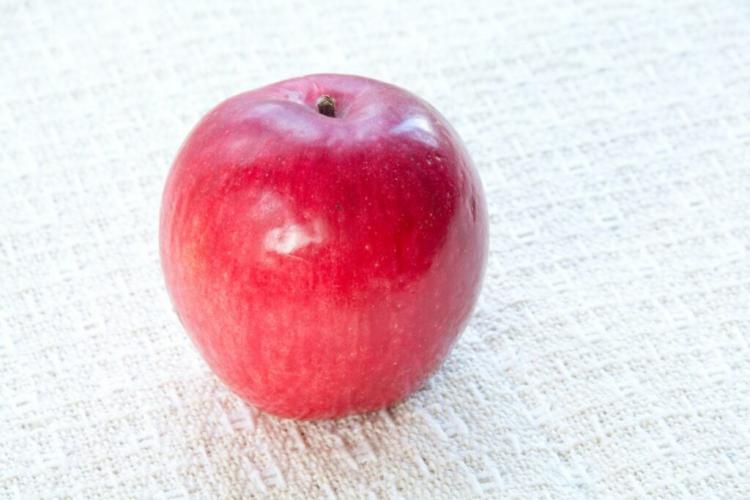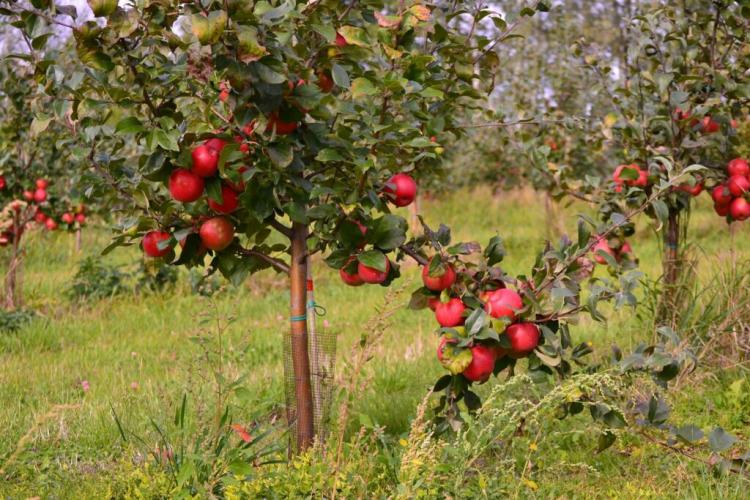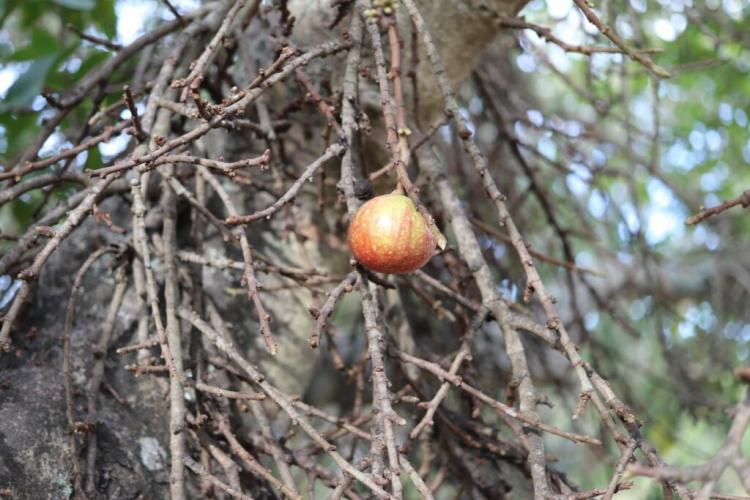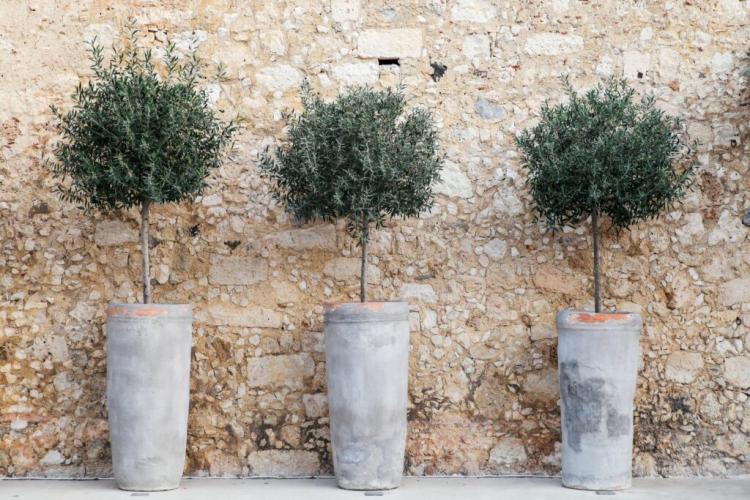Liberty apple: properties & uses of the fall apple
The apple variety ‘Liberty’ was created through targeted breeding and scores with very good cultivation properties and natural health. We present the young variety and its special features in terms of cultivation and care.
‘Liberty’ is a young apple variety that has it all: It brings resistance to two important apple diseases – fire blight and apple scab. It is also only minimally susceptible to other diseases. The variety also has low demands on the climate and the soil and the good taste of the Liberty apple speaks for its own garden. The only drawback of this variety is the short shelf life. By December at the latest, the remains of the rich harvest should have been processed into delicious applesauce.
Liberty apple: profile
Table of Contents
| fruit | medium to large in size; dark red body-color |
| taste | juicy, sourer with a slight sweetness |
| Yield | regularly |
| Harvest time | from mid-September |
| Ripe for enjoyment | October to December |
| Shelf life | bad; storable until Christmas |
| growth | medium strength; heavily branched |
| climate | medium heat demand |
| Diseases and pests | resistant to fire blight and robust to apple scab |
Origin and history of the apple variety ‘Liberty’
The apple variety ‘Liberty’ comes from the USA from a breeding project at the Geneva Research Station near New York in the 1970s. It resulted from several crosses of the varieties ‘Rome Beauty’ and ‘Macoun’. The breeding work aimed to create an apple variety that is highly robust against the bacterial apple disease fire blight ( Erwinia amylovora ). This is exactly what was achieved with the breeding of ‘Liberty’: Even with a comparatively high infestation pressure, the variety is still resistant to the dreaded and notifiable fire blight. ‘Liberty’ is also recommended in Switzerland, Austria, and Germany for cultivation in fire-blight-prone regions.
Apple ‘Liberty’: characteristics and taste
The fruit of the apple variety ‘Liberty’ is medium to very large and has a flat, round to conical shape. The basic color is yellowish, but can hardly be seen under the dark red covering color, which usually covers over 90% of the surface. The stem is short and the stem and calyx pit is slightly rusted. Inside the ‘Liberty’ variety there is yellow, light, and juicy, rather acidic flesh that is rounded off with a slight sweetness. The taste is described as good by international pomologists.
Special features in cultivation and care
The apple variety ‘Liberty’ has a medium heat requirement and is moderately frost-resistant in terms of blossom and fruit. It makes few demands on the floor, depending on which base it is combined with. Any normal garden soil is suitable, only very light and sandy locations and particularly heavy, clayey soils hurt the ‘Liberty’ variety.

The growth is medium strong and there are plenty of branches. Especially with heavy curtains, the crown tends to overhang. Due to the pronounced branching and the hanging growth, an annual apple tree pruning is necessary. The crown should be thinned out and branches that are too hanging should be shortened.
‘Liberty’ can be cultivated very well as a high stem on a strong base. Since large trees can only be cut and cared for under difficult conditions, a large amount of fruitwood and the abundant fruit set to result in rather smaller apples.
However, ‘Liberty’ can also be raised to a small tree on a poorly growing base, which then, however, also involves a greater amount of pruning.
You might so like: Balsam Apple: Location, Care And Propagation Of Clusia
The flowers appear in large numbers early to mid-early. If the tree is not exposed to late frost, it will bloom almost equally every year without fluctuating yields. The prerequisite for this is that it is not unbalanced by a cut that is too strong.
The flower itself provides plenty of pollen for insects and is reliably fertilized, for example, by the varieties ‘James Grieve’, ‘Reglindis’, ‘McIntosh’ and ‘Alkmene’.
The apple variety ‘Liberty’ is, according to its breeding goal, resistant to fire blight and very robust to apple scab. Powdery mildew and fruit tree canker can occur in soils that are too wet and very clayey, but the susceptibility is also low.
You May Also Like Is An Apple A Fruit?
Harvesting and using the ‘Liberty’ penalty
‘Liberty’ is a typical autumn variety: Depending on the weather, it can be harvested as early as mid to late September. The harvest window for the Liberty apple is quite short because the apples all ripen almost at the same time and then soon fall to the ground. The variety develops its best taste between October and December. Unfortunately, they cannot be stored longer than Christmas, but the apples are ideal for direct consumption or quick processing into puree or juice. They make pleasantly fine applesauce with a hint of pink.
You might so like: How To Plant Shallots: Growing The Asian Onion In Your Garden
‘Liberty’ and all of its pollinators belong to those summer or autumn apples that can hardly be stored. It is different with winter apples like the ‘Ontario’ or the ‘Rhenish crooked stalk’. If you grow early and late-ripening varieties in combination, you can enjoy apples from your own garden for several months.
You Might Also Like: Is An Apple Considered Fruit?






